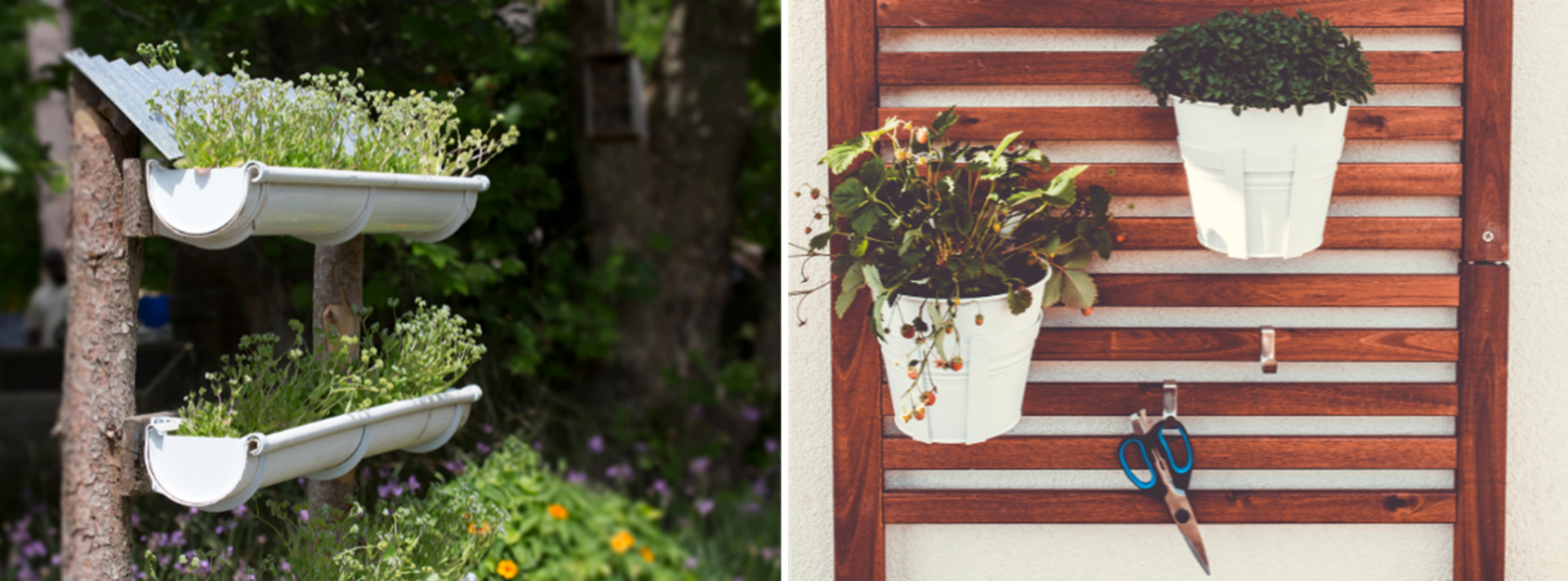Here’s an idea that’s off the wall; grow a garden on it. Not on top of it, right up it's side!
Vertical gardening involves the use of some kind of upright structure to bring plants off the ground. You can enlist fences, balcony railings, poles, and trellises. You can stack planters on wall shelves or make your own hanging garden by suspending plants at different heights. You don’t need anything elaborate, just your imagination.
Save space and money
Vertical gardening's popularity began as a nod to the trend toward smaller lawns and quickly spread to indoor spaces. Instead of having rows of plants that you have to maneuver through, you cultivate a garden that requires less space and less maintenance. Plants like succulents require little more than a periodic misting. The reduced need for things like fertilizer and compost keeps more of your money in your pocket. The smaller garden footprint is ideal for older people living in local and retirement living communities.
Take a break from the norm
For all the joy that can come from nurturing a garden, it can cause some strain on your body, especially if you already have medical conditions, such as a slipped disc.. Growing your garden vertically can reduce strain on your body. Think how much easier it is to tend to plants when they're at eye or waist level. Vertical gardening makes it possible for someone with physical challenges to once again enjoy gardening.
Vertical gardening indoors
Your vertical garden offers more than beauty. Even small-scale placement of houseplants can help filter out indoor air pollutants. A larger indoor garden can add humidity in cold winter months when the furnace tends to dry things out. Overall, a vertical garden contributes to good indoor air circulation. For those without green thumbs, there are plenty of ‘click and grow’ smart gardens that let you grow herbs or other small plants.

How does your garden grow?
With so many vertical gardening options available, what you grow and how you grow it depends on where you plan to do it. Inside, you need a sunny space and a wall that’s strong enough to handle the weight of shelves and planters. Just as you don’t want the garden on the floor because of the bending and stooping, make sure it’s not too high to reach. Outdoor vertical gardens may need sturdier structures to handle the elements. Plants grown outdoors may also need more frequent watering and fertilizing.
What to grow
One of the greatest discoveries about vertical gardening is that a huge variety of plants take to it so well. If you’re trying to get more fresh food into your diet, vegetables like radishes and salad greens like lettuce are excellent choices. They mature early and don’t develop deep roots requiring a lot of space.
If you have a balcony railing or a fence, vining plants like cucumbers, pole beans, and tomatoes can root in a pot and then literally climb the wall. Flowers well suited to vertical gardening include pansies and orchids, while coverage plants like succulents and ferns are leafy showoffs.
Small space-Big reward
Those who may have spent decades in homes large enough to accommodate a back garden before downsizing know the simple pleasure that comes from seeing something they planted grow and thrive. A vertical garden brings that sense of accomplishment, while adding beauty to a smaller space.
Will you give vertical gardening a try? Share this blog and tag Abbeyfield on social media if you do! We're on Facebook, Twitter and Instagram. Thank you to LawnStarter for working with us on this guest blog.